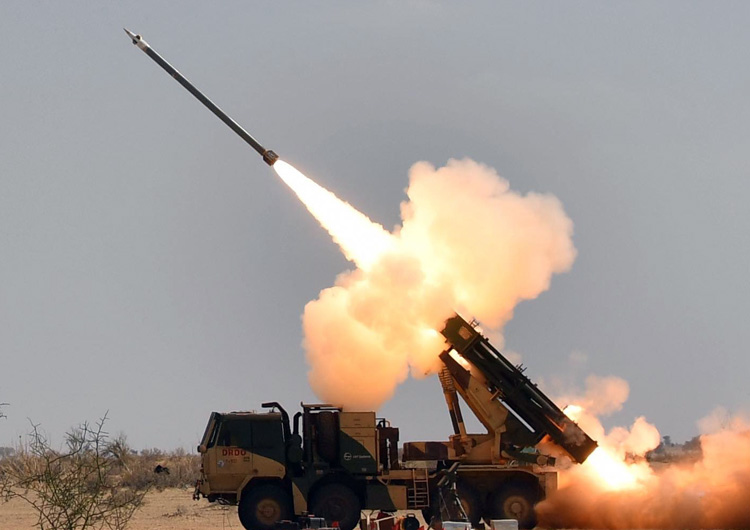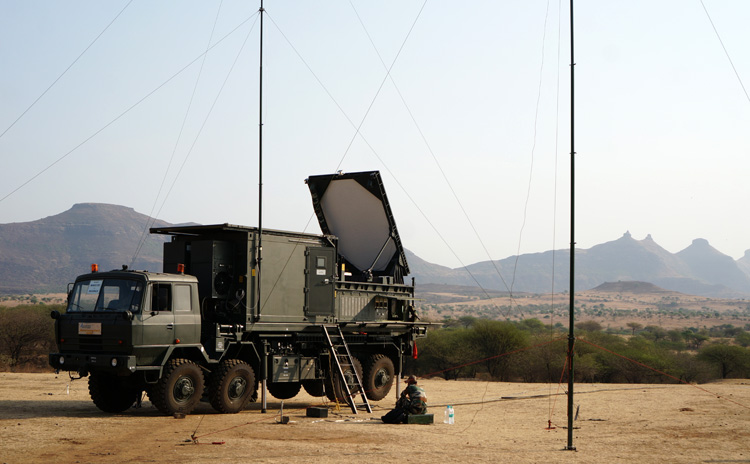INDIAN ARMED FORCES CHIEFS ON OUR RELENTLESS AND FOCUSED PUBLISHING EFFORTS

The insightful articles, inspiring narrations and analytical perspectives presented by the Editorial Team, establish an alluring connect with the reader. My compliments and best wishes to SP Guide Publications.

"Over the past 60 years, the growth of SP Guide Publications has mirrored the rising stature of Indian Navy. Its well-researched and informative magazines on Defence and Aerospace sector have served to shape an educated opinion of our military personnel, policy makers and the public alike. I wish SP's Publication team continued success, fair winds and following seas in all future endeavour!"

Since, its inception in 1964, SP Guide Publications has consistently demonstrated commitment to high-quality journalism in the aerospace and defence sectors, earning a well-deserved reputation as Asia's largest media house in this domain. I wish SP Guide Publications continued success in its pursuit of excellence.
- Operation Sindoor: Resolute yet Restrained
- India’s Operation Sindoor Sends a Clear Message to Terror and the World – ‘ZERO TOLERANCE’
- Japan and India set forth a defence cooperation consultancy framework, talks on tank and jet engines
- Terrorist Attack in Pahalgam in Kashmir: Unfolding a long surgical war against PAK
- Lt General Pratik Sharma takes over Command of Indian Army's Northern Command
Export with Care
We need to be careful about which countries we are exporting indigenous equipment to and have sufficient safeguards in place to ensure the technology is not passed on to our adversaries
 |
The Author is Former Director General of Information Systems and A Special Forces Veteran, Indian Army |

Defence Minister Rajnath Singh stated on December 9, 2022 that India’s defence exports stood at a record 14,000 crore in 2021-22, which was somewhat exaggerated because the Ministry of Defence (MoD) Year End Review 2022 published on December 17, 2022 pegged the defence exports in 2021-2022 at “touching 13,000 crore. He also said that by 2023, defence exports will cross 19,000 crore and “we are well on course to achieve the target of 25,000 crore worth of exports by 2025."
He further said, “Before 2014, India was among the ‘Fragile Five’ nations, a word coined by investment firm Morgan Stanley. Today, we have moved out of that category and joined the ‘Fabulous Five’ economies of the world. According to a recently published article on the global economic outlook by Managing Director of Morgan Stanley Chetan Ahya, India will be the third largest economy after the US and China by 2027. India’s GDP will increase to $8.5 trillion in the next ten years. This clearly shows that India has become a centre of hope and confidence for the world.
India will be the third largest economy after the US and China by 2027. India’s GDP will increase to $8.5 trillion in the next ten years.
He added that with the Centre’s vision of ‘Atmanirbhar Bharat’, India has joined mainstream of manufacturing and is now producing indigenous aircraft carriers such as INS Vikrant, and is focused on increasing participation of the private sector for their as well as the nation’s growth while inviting foreign companies to ‘Make in India, Make for the World’.
Defence Minister Rajnath Singh said due to the country’s strong economic condition, there has been record foreign direct investment (FDI) despite COVID-19 and that 2021-22 recorded the highest ever FDI at $83.6 billion. He commended Prime Minister Narendra Modi’s vision and said India has become the fifth largest economy with a GDP of $3.5 trillion in the last 8.5 years and will become one of the most powerful nations in times to come.
India registered defence exports worth 8,000 crore in six months of FY 2022-23 and aims for 25,000 crore defence exports by end of FY 2025. Military hardware being exported by India include missiles, advanced light helicopters, offshore patrol vessels, personal protective gear, surveillance systems, and a variety of radars. As per recent news reports, the Indian defence firm ‘Kalyani Strategic Systems Limited’ has won an export order to Armenia worth $155.5 million for supplying artillery guns, the first order won by an indigenous company for these guns.
Military hardware being exported by India include missiles, advanced light helicopters, offshore patrol vessels, personal protective gear, surveillance systems, and a variety of radars
Above are good pointers but our policy makers fail to acknowledge that defence exports by themselves don’t make a nation militarily strong and without military strength India cannot become one of the most powerful nations of the world. The modest hike in Defence Budget 2023-2024 despite continued confrontation with an aggressive China is certainly not taking India on the path to become a militarily strong nation.
Defence Budget 2023-2024 works out to just 1.97 per cent of the projected GDP for 2023-2024. If the defence pension allocation of 1.38 lakh crore for around 35 lakh ex-servicemen and defence civilians is considered, it drops to a mere 1.5 per cent of the GDP. This, despite military experts demanding that India should allocate over 2.5 per cent of the GDP to defence expenditure for building requisite deterrence against the collusive threat from China and Pakistan. As of now, military modernisation will proceed as “slowly” as before.
The allocation of 1.62 lakh crore as capital outlay for purchase of new military equipment is an increase of seven per cent over the current fiscal’s capital budget of 1.52 lakh crore but with the average rate of inflation remaining around six per cent throughout the current fiscal year, the capital budget remains unchanged in absolute terms.

In terms of R&D, the government had announced an allocation of 25 per cent of the defence R&D budget to Industry, startups and academia in the 2022-23 but this has not yet been implemented for industrial R&D towards development of indigenous products and platforms with IP control. In Defence Budget 2023-2024, DRDO’s allocation is enhanced by nine per cent (total 23,264 crore) but insufficient budget for prototype development continues to plague the system especially with the industry neither incentivised to undertake in-house R&D nor government funded to undertake high-risk platform-level development of technologies and design-development of Indian equipment and platforms.
Above explains the impediments in optimising Atmanirbhar Bharat and becoming one of the most powerful nations of the world. Besides, defence exports should not be hostage to any ballpark target figure by a certain year mentioned off the cuff by the Prime Minister a few years back but based on operational realities; defence exports at the expense of equipping the military just to please the Prime Minister must be avoided.
Defence exports by themselves don’t make a nation militarily strong. The modest hike in Defence Budget 2023-2024 is certainly not taking India on the path to become a militarily strong nation.
Take for example, the modernisation drive of the Indian Army which has been pending for two years. In December 2022, India signed a deal with Armenia for an estimated cost of 2,000 crore to export missiles, rockets and ammunition to that country, which included the first-ever export of the indigenous Pinaka multi-barrel rocket launchers (MBRL). But earlier, India also exported 4 x indigenous Swathi weapon locating radars (WLR) designed to the specifications of the Indian Army for tracking incoming artillery shells, mortars and rockets to pinpoint location of enemy launchers and positions. Ironically, the Army which has deployed Swathi on both Pakistan and China borders is still looking for additional 12 x Swathi radars. The need is for the Defence Minister to advise the Prime Minister to give priority to equip the military over defence exports.
The second issue is even more serious, in that we need to be careful about which countries we are exporting indigenous equipment to and have sufficient safeguards in place to ensure the technology is not passed on to our adversaries. In the instant case, a Captain from the Armenian army was arrested for selling top-secret information about the Swathi WLR to a rival intelligence agency.
According Armenia’s ‘NewsAM’, “In April-May 2021, the Captain handed over military information constituting a state and service secret to a representative of a foreign special service, including information on military equipment purchased from India, for which he received money twice and a mobile phone from a representative of a foreign special service as payment.” China-Pakistan would be obviously working on how to target or neutralise the Swathi WLR deployed by the Indian Army.





